Regards Carausius
Saturday 16 November 2013
Reformed Blog
I have decided to restart the blog after a few months vacant with a greater selection of articles on a larger variety of subjects. So without further ado, welcome back.
Monday 14 October 2013
Warriors of the Week (what was uniform of the week)
I am aware that slowly my Uniform of the Week posts have progressed further away from uniforms and have been more about units themselves and I've decided that this is because I want to write about soldiers as opposed to what they wore, I may write some more posts showcasing uniforms but when I do I will not attempt to write my art critic style prose I wrote before.
Anyway this weeks warriors are the Saxon soldiers of the wars against Viking and Norman invaders, the Fyrd and Hurscals who fought for Alfred the Great, Harold Godwinson and many others. The Saxons have always been Saxons rather than Normans in terms of preference. I just liked the kind of noble barbaric Saxons as opposed to the more neat and obviously wicked Normans. My interest in shield wall warfare has been rekindled recently due to reading Bernard Cornwell books and so I thought I'd showcase the Saxons for this week.
Anyway I love Saxons in general, I know Hurscals and Fyrd are very different but lets face it their both cooler than any Norman, I love the society and I love the armour especially the helms of Saxon Commanders. Anyway the Saxon warriors of this period were much better than the Normans obviously and I now realise that changing the name has changed nothing.
Anyway this weeks warriors are the Saxon soldiers of the wars against Viking and Norman invaders, the Fyrd and Hurscals who fought for Alfred the Great, Harold Godwinson and many others. The Saxons have always been Saxons rather than Normans in terms of preference. I just liked the kind of noble barbaric Saxons as opposed to the more neat and obviously wicked Normans. My interest in shield wall warfare has been rekindled recently due to reading Bernard Cornwell books and so I thought I'd showcase the Saxons for this week.
Anyway I love Saxons in general, I know Hurscals and Fyrd are very different but lets face it their both cooler than any Norman, I love the society and I love the armour especially the helms of Saxon Commanders. Anyway the Saxon warriors of this period were much better than the Normans obviously and I now realise that changing the name has changed nothing.
In Praise of Bernard Cornwell
Bernard Cornwell is the English author most famous for his Sharpe series, his writing career began with Sharpe's Eagle and Sharpe's Gold. He is definitely one of the finest authors writing historical fiction recently and the sucess Sharpe books and subsequent television essentially restarted the historical fiction genre. I first discovered Cornwell having seen the Sharpe TV series a few years ago and I've just not stopped. Here's a look at some of his books.
The Sharpe Series
Having been introduced to Cornwell via the Sharpe TV series these were the first Cornwell books I read. Each book from the first book over thirty years ago till the latest book (2006) is simmilar in themes and style but is very much a separate work. The Sharpe books are basically just great fun, their is a real sense that the author enjoys writing the books as much as the reader enjoys reading them and in my case I enjoy them a lot. The books were not written in order so you can just dip in and out of the series.The stories follow the adventures of a British Rifle officer Richard Sharpe who due to his common birth competes with aristocratic scorn as well as his foes on the battlefield. I really love the Sharpe books and even the oldest are still great.
The Arthur Series
I have only read the first book of this series but it was pretty good, in this series Bernard Cornwell trys to create an Arthurian story that is as accurate as possible to recent historical thought (it's set in the 6th century). What I liked about the first book is that it kept the Arthurian magic but you are never sure to what extent the magic is real or just superstition and this is really clever. I did not like this as much as some of his other books however and I wish I knew why.
Gallows Thief
TV crime is so much easier to follow, I never really mastered this crime detective novel but I did read it pretty fast. It was kind of hard for me to get into this properly as I am so used to his military novels, I liked some of the characterisation and felt the book was lively but as I've said I didn't really get because I'm a bit dull witted as far as murder mysteries go. I was glad that it was in a historical setting however but all I could think of in this regency thriller was Oliver Twist (from a historians perspective I find this embarrasing).
Azincourt and Redcoat
Azincourt bears very close ressemblance to the earlier Redcoat which I have also read except it is set at the battle of Agincourt rather than the Valley Forge Winter. I prefered Azincourt so I like to pretend that it came first so that Redcoat is the copy. They are not identical but Azincourt is the superior book, I liked the way it showed a different side of Shakespeare's heroic Henry the 5th and it's characterisation was as always very good. Redcoat should not be dismissed however, my major problem with this book is that a certain character had to die just to give it its predictable happy ending and that character happened to be my favourite, oh well.
1356
This one came out last year and I liked it a lot, yeah simmilar characters same kind of writing, still great. Cornwell always excites and theirs not much more to say on this one except it's great. Apparently Thomas of Hookton, the main character is also the main character in the Grail Quest series, I'll have to read those.
The Warrior Chronicles
I'm potentially leaving best till last here. I can never decide whether I like these or Sharpe better. Uhtred the exiled Saxon Warlord is a very interesting character, I like the fact that he is always pining for things he may never achieve and the fraying loyalty to Alfred that leads to all the tension. I think Cornwell describes the brutal glory of the shield wall really well and I would strongly advise you read these.
Those are just the ones I've read but I think if you're not into Cornwell yet then you need to be. A German family friend who is a keen history enthusiast taught himself English by reading Cornwell with dictionary in hand. I hope you like his books as much as I do and this has inspired you to read them.
The Sharpe Series
Having been introduced to Cornwell via the Sharpe TV series these were the first Cornwell books I read. Each book from the first book over thirty years ago till the latest book (2006) is simmilar in themes and style but is very much a separate work. The Sharpe books are basically just great fun, their is a real sense that the author enjoys writing the books as much as the reader enjoys reading them and in my case I enjoy them a lot. The books were not written in order so you can just dip in and out of the series.The stories follow the adventures of a British Rifle officer Richard Sharpe who due to his common birth competes with aristocratic scorn as well as his foes on the battlefield. I really love the Sharpe books and even the oldest are still great.
The Arthur Series
I have only read the first book of this series but it was pretty good, in this series Bernard Cornwell trys to create an Arthurian story that is as accurate as possible to recent historical thought (it's set in the 6th century). What I liked about the first book is that it kept the Arthurian magic but you are never sure to what extent the magic is real or just superstition and this is really clever. I did not like this as much as some of his other books however and I wish I knew why.
Gallows Thief
TV crime is so much easier to follow, I never really mastered this crime detective novel but I did read it pretty fast. It was kind of hard for me to get into this properly as I am so used to his military novels, I liked some of the characterisation and felt the book was lively but as I've said I didn't really get because I'm a bit dull witted as far as murder mysteries go. I was glad that it was in a historical setting however but all I could think of in this regency thriller was Oliver Twist (from a historians perspective I find this embarrasing).
Azincourt and Redcoat
Azincourt bears very close ressemblance to the earlier Redcoat which I have also read except it is set at the battle of Agincourt rather than the Valley Forge Winter. I prefered Azincourt so I like to pretend that it came first so that Redcoat is the copy. They are not identical but Azincourt is the superior book, I liked the way it showed a different side of Shakespeare's heroic Henry the 5th and it's characterisation was as always very good. Redcoat should not be dismissed however, my major problem with this book is that a certain character had to die just to give it its predictable happy ending and that character happened to be my favourite, oh well.
1356
This one came out last year and I liked it a lot, yeah simmilar characters same kind of writing, still great. Cornwell always excites and theirs not much more to say on this one except it's great. Apparently Thomas of Hookton, the main character is also the main character in the Grail Quest series, I'll have to read those.
The Warrior Chronicles
I'm potentially leaving best till last here. I can never decide whether I like these or Sharpe better. Uhtred the exiled Saxon Warlord is a very interesting character, I like the fact that he is always pining for things he may never achieve and the fraying loyalty to Alfred that leads to all the tension. I think Cornwell describes the brutal glory of the shield wall really well and I would strongly advise you read these.
Those are just the ones I've read but I think if you're not into Cornwell yet then you need to be. A German family friend who is a keen history enthusiast taught himself English by reading Cornwell with dictionary in hand. I hope you like his books as much as I do and this has inspired you to read them.
Saturday 5 October 2013
Uniform of the Week (2)
I have been a bit inactive of late due to life and writing a few articles that are quite time consuming so these last to weeks have been a bit sparse in terms of content but I have reached a better time now. The uniform for this week is the Russian Cuirassiers (1812), I am in love with their ridiculous helmets that make these gigantic men appear even taller. I also think the contrast between the black cuirass and the white tunic looks impressive, professional and bold, the red also outlines the black and white nicely. A fine uniform for a very good unit.
Mega Article Coming Soon!
Just thought I'd let people know that I am writing a long article on Archduke Charles which strives to contain all the great content of various online sources and books into the most accurate account of his life on the web.
Uniform of the Week
The chronology of uniforms is something that has always interested me, I like how uniforms developed from peacock brilliance to drab, professional camouflage. This weeks uniform is essentially the Dorothea of Brandenburg uniform which I showcased earlier, updated a few centuries. The uniform is a Prussian Infantryman from the 1870s. I like the functionallity of the tunic and equipment topped with the ostentatious pickelhaube as it shows the evolution of uniforms from extravagant to proffesional. It is obvious how this uniform eventually became the famous German uniforms of the great war.
Tuesday 1 October 2013
Perry Miniatures Plastic French Line Infantry Review
How to say this without sounding like a patriotic git and marginally racist...
The British are much better, the models have less flash, more options, less chunkiness and no decapitations!
I absolutely loved the Perry Redcoats (I'll have to get another set to review) and the hussars of grown on me but my dislike of these models has steadily increased since I purchased them. I believe this is either a very early or the first perry plastic kit and it shows, the models are stocky and the arms are held very close to the body but this is understandable since they are mostly one-piece castings other than backpacks. Being a modeler I hate one piece castings, the only models that are not one piece are the voltigeur and a few arms on command. Perry have decided to torment me however with head options and considering you only get 3 simmilar sprues (one is part command) for 42 men you'll want these. The problem is you have to decapitate the models just to do this and carve chunks out of the shoulder so the collar inclusive pieces don't look like somone is wearing a long sepperate collar. So I now have a few french which I dared to convert which look like they are chicken men.
Chicken men that is until they are painted, I did test models with white and black under coats respectively and I have to say when painted the head swap isn't too obvious. To be honest they had potential and at that price (£20 for 42 models) I'm not complaining but I'd recommend you think about whether you're prepared to deal with the faff before you consider purchasing these.
Carausius Rating: 3/5
The British are much better, the models have less flash, more options, less chunkiness and no decapitations!
I absolutely loved the Perry Redcoats (I'll have to get another set to review) and the hussars of grown on me but my dislike of these models has steadily increased since I purchased them. I believe this is either a very early or the first perry plastic kit and it shows, the models are stocky and the arms are held very close to the body but this is understandable since they are mostly one-piece castings other than backpacks. Being a modeler I hate one piece castings, the only models that are not one piece are the voltigeur and a few arms on command. Perry have decided to torment me however with head options and considering you only get 3 simmilar sprues (one is part command) for 42 men you'll want these. The problem is you have to decapitate the models just to do this and carve chunks out of the shoulder so the collar inclusive pieces don't look like somone is wearing a long sepperate collar. So I now have a few french which I dared to convert which look like they are chicken men.
Chicken men that is until they are painted, I did test models with white and black under coats respectively and I have to say when painted the head swap isn't too obvious. To be honest they had potential and at that price (£20 for 42 models) I'm not complaining but I'd recommend you think about whether you're prepared to deal with the faff before you consider purchasing these.
Carausius Rating: 3/5
Sunday 22 September 2013
French have arrived!




Here they are. French line are a bit weird (I'll show you why in the review) but generally look good and Napoleon is great!
Hussar Update
Uniform of the Week
It may surprise that I have interests in periods other than the 18th and 19th centuries and this weeks uniform reflects that. Ever since the original Rome Total War game I have loved Parthian and Armenian Cataphracts, with their lamelar, scaled and plate armour not only were they the best mounted unit in the game but they captured my very young imagination and still do. The mounts look monstrous in their barding and the riders look exotic and fierce, almost alien.
Monday 16 September 2013
Another Reference Website
From what I have seen so far this website is German uniforms from the mid to late 1700s. It's a very good resource for an enthusiast such as me and you should really check it out.
http://www.grosser-generalstab.de/sturm/sturm126.html
http://www.grosser-generalstab.de/sturm/sturm126.html
Thursday 12 September 2013
More Hussars!
A rather lovely friend of mine bought me some more British hussars as a Birthday present. Despite my negativity in my review they are a joy to paint so I can't wait to make them. I am thinking they will be Hanoverians for Waterloo.
Uniform of the Week
This weeks goes to the largely unknown Electress Dorothea of Brandenburg regiment who fought for the then Electorate of Brandenburg. The regiment was formed in the year 1676 and wore red instead of the traditional Prussian blue. The regiment was named for Sophia Dorothea of Schleswig-Glucksburg, wife of Elector Frederick William. I love the flamboyance of the uniforms and the scene depicted in this image, the interaction between the two soldiers is funny.
Wednesday 11 September 2013
Last Week's Uniform of the Week
Surely among the best known of the world's military police are the Italian Caribinieri. This wonderful photograph comes from 1875 and the poser bears a medal that shows that he fought in the Italian Independence Conflict. As well as the fantastic moustache the mix between simplistic elegance and flamboyant decoration is quite interesting.
The Caribinieri still exist and they still maintain the great elegance of old...
Vive L'empereur
I decide my hussars and line need a great adversary and though he wasn't much in the peninsula, it's Napoleon!
Napoleon would never have won his victories without his troops however so I also ordered these. Can't wait for my purchases to arrive!
Friday 6 September 2013
Make your own night watch
I got this rather fun birthday present from my parents. It's a set of 3D cartoonish paper models which make up into Rembrandt's The Night Watch. So far I've only made the lieutenant Willem van Ruytenburch as the models are surprisingly intricate.
Saturday 31 August 2013
Uniform of the week
I promise this is the last Hussar like thing for awhile. As the name suggests I'm now starting a uniform of the week, weekly post. This week it's a painting by Gericault which illustrates the uniform of an officer of Chasseurs in the Imperial Guard which I think you'll all agree is pretty cool.
Charity Shops are Great for Books and Wallets
I was looking round charity shops today and for a grand total of £6.49 I bought:
Blandford- Military Uniforms of the World in Colour, a book who's plates always appear whenever I search any unit or period online. As the title would suggest it is filled with colour plates of armies and units (by period) from 1652 to the 1960s (when this book was published). For £2.50 what's not to like, especially since it's such a popular and revered tome.
My second purchase was the huge an again beautifully illustrated Cavalry (the history of a fighting elite) by V.Vuksic and Z.Grbasic as the name suggests this wonderful book is all about cavalry and it was only £3.99 which for a large hardback book is pretty amazing. Each page deals with 1 of 100 images of cavalrymen/mounts and gives detailed information as well as a full page colour plate.
Both lovely buys, well worth the tiny sum of money, I must go out more often.
Blandford- Military Uniforms of the World in Colour, a book who's plates always appear whenever I search any unit or period online. As the title would suggest it is filled with colour plates of armies and units (by period) from 1652 to the 1960s (when this book was published). For £2.50 what's not to like, especially since it's such a popular and revered tome.
My second purchase was the huge an again beautifully illustrated Cavalry (the history of a fighting elite) by V.Vuksic and Z.Grbasic as the name suggests this wonderful book is all about cavalry and it was only £3.99 which for a large hardback book is pretty amazing. Each page deals with 1 of 100 images of cavalrymen/mounts and gives detailed information as well as a full page colour plate.
Both lovely buys, well worth the tiny sum of money, I must go out more often.
Friday 30 August 2013
Perry Miniatures British Napoleonic Hussars Review
So I've finished making my hussars and have sprayed them in part (I ran out of spray half way through) and so I reckoned I should so a review of this kit for everyone who may be interested. This review will not contain images as I included some in an earlier post.
I'll start with the box and uniform guide, the box is a beautifully illustrated, eye catching affair with a lovely image of the 10th hussars in 1815 (as the uniform guide shows), it is well sized and features vague instructions which are the only ones found in the kit. I'm not going to say any more on the box because it's simply just a nice box and nothing more exciting. The uniform guide on the other hand is something to get a lot, more excited about, the images are detailed and accurate as well as being very nice to look at. The 4 page A5 guide has uniforms for all regiments including Hanoverians and shows all headgear worn, sadly this is a sign of bad things to come. The box and booklet are very nice and useful overall and are exactly what I would expect of Perry in terms of standard.
As a hobbyist my favourite aspect is building the models, which I know makes me rather unusual, the Perry Twins aim their models at people who want to build units quickly which is not really me but the models have always been so nice that I have ignored this. Sadly one thing I crave more than all is for no models to be simmilar because of my Gamesworkshop upbringing and in trying to be as accurate as possible these models have let me down. The sprues contain heads for five different hat types from different years, I am making a predominantly peninsula army that I may well use for Waterloo as I'm not a great stickler for accuracy, the problem is that because they have tried to offer hobbyist the most accurate models for any given year between 1808 and 1815 (including KGL) they have actually condemned the converter/modeller hobbyist. There are only three normal head types for each hat. This means that you have only 3 different heads for your 12 non command models meaning you only have 2 models (the command with different heads), another versitality problem is the arms which when glued only allow a small handful of poses. Otherwise there is nothing to complain about the models which are elegant with minimal mould lines or spare plastic and the horses (which allow for some variety in pose) are very well sculpted but for me the problems are pretty major.
Those problems are entirely personal however but the way the models have been laid on the frame is not, the positioning and the way the models are held onto the sprue means it is almost impossible not to savage the legs of your hussars and the horses saddles with your knife, the saddles in particular are horrendous for removing excess sprue attached to the model. The best way to remove these parts is to cut off all the other stems and then wiggle the last tricky part off but this still isn't that reliable. This I assume is not the fault of the Perry Twins but the moulding company Renedra but this is still their set.
Overall it's a good set idea with some great sculpting and a perfect presentation but from my perspective this set didn't entirely fit the bill, I love the topic but the lack of variety in the models and the difficult sprue layout lets this set down.
Carausius Rating: 3/5
I'll start with the box and uniform guide, the box is a beautifully illustrated, eye catching affair with a lovely image of the 10th hussars in 1815 (as the uniform guide shows), it is well sized and features vague instructions which are the only ones found in the kit. I'm not going to say any more on the box because it's simply just a nice box and nothing more exciting. The uniform guide on the other hand is something to get a lot, more excited about, the images are detailed and accurate as well as being very nice to look at. The 4 page A5 guide has uniforms for all regiments including Hanoverians and shows all headgear worn, sadly this is a sign of bad things to come. The box and booklet are very nice and useful overall and are exactly what I would expect of Perry in terms of standard.
As a hobbyist my favourite aspect is building the models, which I know makes me rather unusual, the Perry Twins aim their models at people who want to build units quickly which is not really me but the models have always been so nice that I have ignored this. Sadly one thing I crave more than all is for no models to be simmilar because of my Gamesworkshop upbringing and in trying to be as accurate as possible these models have let me down. The sprues contain heads for five different hat types from different years, I am making a predominantly peninsula army that I may well use for Waterloo as I'm not a great stickler for accuracy, the problem is that because they have tried to offer hobbyist the most accurate models for any given year between 1808 and 1815 (including KGL) they have actually condemned the converter/modeller hobbyist. There are only three normal head types for each hat. This means that you have only 3 different heads for your 12 non command models meaning you only have 2 models (the command with different heads), another versitality problem is the arms which when glued only allow a small handful of poses. Otherwise there is nothing to complain about the models which are elegant with minimal mould lines or spare plastic and the horses (which allow for some variety in pose) are very well sculpted but for me the problems are pretty major.
Those problems are entirely personal however but the way the models have been laid on the frame is not, the positioning and the way the models are held onto the sprue means it is almost impossible not to savage the legs of your hussars and the horses saddles with your knife, the saddles in particular are horrendous for removing excess sprue attached to the model. The best way to remove these parts is to cut off all the other stems and then wiggle the last tricky part off but this still isn't that reliable. This I assume is not the fault of the Perry Twins but the moulding company Renedra but this is still their set.
Overall it's a good set idea with some great sculpting and a perfect presentation but from my perspective this set didn't entirely fit the bill, I love the topic but the lack of variety in the models and the difficult sprue layout lets this set down.
Carausius Rating: 3/5
Saturday 24 August 2013
Perry Hussars Arrived
I am really pleased to get these as I have been rushing to the door everyday when I get home in anxious expectancy but to be honest they arrived in good time and were well worth the short though agonising wait. It was a great moment to open up the box and see that mazing box art. Loving these figures so far and I'll put pictures up once they're built.

Cuirassiers, a vague history
The first cuirassiers of the late 1500s were the direct descendants of the medieval men at arms and were not that different in appearance either, though their armour was considerably less heavy than their predescesors. As, heavy cavalry the charge was as always the key strategy but as infantry weapons modernised it was soon realised that the heavy armour served little purpose and was restrictive when using the new weapon of choice, the pistol!
In the 17th century conflicts such as the English Civil War and Thirty Years War cavalry armed themselves with multiple pairs of pistols (a weapon specifically developed for use by cavalry) as well as the traditional sabres, this meant that the horsemen didn't have to bother reloading their weapons, which is difficult enough to do from a horse even without armour. The addition of pistols meant that cavalry could carry more force on the charge and though they attempted a variety of obscure firing tactics, the cuirassiers were still very much a blunt tool to batter the enemy with.
The Cuirassiers of the 1700s were even further simplified, generally they wore only the cuirass of their name sake and an iron skullcap hidden beneath an elegant tricorne. With the advent of flintlock musketry the cuirass started to decline in use and some armies, including Britain removed the cuirass from service. The cuirassiers as a group had begun to change, no longer were they the sons of nobility instead they were required to be the tallest and strongest me in the cavalry regardless of social status. Though shock cavalry charges often won the day, the allied infantry attack against the famous French cavalry at Minden and the square formation revealed that with modern tactics and careful strategy even the feared cuirassiers could be beaten back. Though many nations still used the cuirassiers into the 19th century, the first signs of weakness were showing for the revered cuirassiers and indeed most cavalry, it would not be long till they were rendered obsolete.
Though the majority of armies fielded them in name in the early 1800s, due to financial difficulties many armies tried to do cuirassiers on the cheap, the Prussian Cuirassiers wore no cuirass and the Austrians only wore the front half, which was a disaster when they inevitably retreated. Cuirassiers from all nations still fought effectively and it was an awe inspiring sight to see the French and allied and the Russian cuirassiers clashing at Borodino. Cuirassiers or equivalent life guards were still a feature of most European armies throughout the rest of the 19th century and even the once forward thinking British still practiced square formations till the turn of the century.
The last blast of the trumpet for the cuirassiers like most cavalry came in the first world war, despite their brown cloth covering to hide the shine of their breastplates the French cuirassiers were extremely ineffective and suffered huge losses, cavalry had been beaten back for a final time, not with square formations and flintlock musketry but with barbed wire and machine gun fire.
Some countries still have cuirassiers for ceremonial purposes but its not exactly the real deal.
Thanks for reading
In the 17th century conflicts such as the English Civil War and Thirty Years War cavalry armed themselves with multiple pairs of pistols (a weapon specifically developed for use by cavalry) as well as the traditional sabres, this meant that the horsemen didn't have to bother reloading their weapons, which is difficult enough to do from a horse even without armour. The addition of pistols meant that cavalry could carry more force on the charge and though they attempted a variety of obscure firing tactics, the cuirassiers were still very much a blunt tool to batter the enemy with.
The Cuirassiers of the 1700s were even further simplified, generally they wore only the cuirass of their name sake and an iron skullcap hidden beneath an elegant tricorne. With the advent of flintlock musketry the cuirass started to decline in use and some armies, including Britain removed the cuirass from service. The cuirassiers as a group had begun to change, no longer were they the sons of nobility instead they were required to be the tallest and strongest me in the cavalry regardless of social status. Though shock cavalry charges often won the day, the allied infantry attack against the famous French cavalry at Minden and the square formation revealed that with modern tactics and careful strategy even the feared cuirassiers could be beaten back. Though many nations still used the cuirassiers into the 19th century, the first signs of weakness were showing for the revered cuirassiers and indeed most cavalry, it would not be long till they were rendered obsolete.
Though the majority of armies fielded them in name in the early 1800s, due to financial difficulties many armies tried to do cuirassiers on the cheap, the Prussian Cuirassiers wore no cuirass and the Austrians only wore the front half, which was a disaster when they inevitably retreated. Cuirassiers from all nations still fought effectively and it was an awe inspiring sight to see the French and allied and the Russian cuirassiers clashing at Borodino. Cuirassiers or equivalent life guards were still a feature of most European armies throughout the rest of the 19th century and even the once forward thinking British still practiced square formations till the turn of the century.
The last blast of the trumpet for the cuirassiers like most cavalry came in the first world war, despite their brown cloth covering to hide the shine of their breastplates the French cuirassiers were extremely ineffective and suffered huge losses, cavalry had been beaten back for a final time, not with square formations and flintlock musketry but with barbed wire and machine gun fire.
Some countries still have cuirassiers for ceremonial purposes but its not exactly the real deal.
Thanks for reading
Monday 19 August 2013
Perry Brits
I recently found my old perry British napoleonic line set and started painting them again. My skills need brushing up a bit (pun intended) but so far things are going well. I ordered hussars this evening and can't wait for them to arrive.
Sunday 11 August 2013
33rd Foot for Junior General
I am a member of the wonderful Junior General website (you should join its a lovely community) and I contribute pretty regularly. For awhile I have been creating a series of British regiments from the 1700s, here are my 33rd foot. Click the image to see a full size version.
Friday 9 August 2013
My strategy for Empire Total War land battles
Here is a rather awful looking diagram that I have created to show you how this versatile strategy works. I have never lost a battle using these tactics and the armies I use have the advantage of being cheap to form because they have a infantry content.
Key:
Arrow- Skirmishers, if you don't have any use militia.
Rectangle- Line Infantry, the key troops for this strategy
Circle- Heavy/Elite Infantry the counter attack
Triangle- Cavalry, skirmishing and devil may care charges
Star- Commander
Red- Enemy
The number of units does not matter (my armies are usually full) but the rough proportions does, majority line infantry with small amounts of the rest.
The Setup
The line infantry from the horse show shape to protect the central artillery from enemy troops, the upper ones can form square if needs be. The skirmishing militia/light infantry are in position and set onto guard and or skirmish mode. The Cavalry are positioned to sweep down when they are needed and the grenadiers are in counter attack position.
The Defence
Other than the occasional light cavalry or skirmisher foray keep you troops in position and let the enemy come onto you, gradually move your back line infantry forward but make sure you are always pouring fire into the enemy. You must support units with each other for this to work. The enemy will not have as much chance to fire back and the work of the cannons should help. You have to time this well but once you think the enemy are breaking or are too close to the artillery start the counter attack.
The Counter Attack
Once the time is right, switch your units to combat mode and charge them, send the heavy infantry and remaining cavalry in support (if this is on campaign do not send your general in) even cavalry can break if charged by line infantry, quickly a route will happen and the enemy will begin to flee, press home the attack until you win. Send your heavies where the enemy are weakest and make sure you hold on to the advantage.
I am not bragging when I say I have never lost with this system, then again Etw is much easier to play as the defender.
Key:
Arrow- Skirmishers, if you don't have any use militia.
Rectangle- Line Infantry, the key troops for this strategy
Circle- Heavy/Elite Infantry the counter attack
Triangle- Cavalry, skirmishing and devil may care charges
Star- Commander
Red- Enemy
The number of units does not matter (my armies are usually full) but the rough proportions does, majority line infantry with small amounts of the rest.
The Setup
The line infantry from the horse show shape to protect the central artillery from enemy troops, the upper ones can form square if needs be. The skirmishing militia/light infantry are in position and set onto guard and or skirmish mode. The Cavalry are positioned to sweep down when they are needed and the grenadiers are in counter attack position.
The Defence
Other than the occasional light cavalry or skirmisher foray keep you troops in position and let the enemy come onto you, gradually move your back line infantry forward but make sure you are always pouring fire into the enemy. You must support units with each other for this to work. The enemy will not have as much chance to fire back and the work of the cannons should help. You have to time this well but once you think the enemy are breaking or are too close to the artillery start the counter attack.
The Counter Attack
Once the time is right, switch your units to combat mode and charge them, send the heavy infantry and remaining cavalry in support (if this is on campaign do not send your general in) even cavalry can break if charged by line infantry, quickly a route will happen and the enemy will begin to flee, press home the attack until you win. Send your heavies where the enemy are weakest and make sure you hold on to the advantage.
I am not bragging when I say I have never lost with this system, then again Etw is much easier to play as the defender.
Great Reference Website
I got this great link http://www.photo.rmn.fr/cf/htm/CSearchT.aspx?V=CSearchT&SID=2K1KTSJNEEXXG&E=S_2K1KTSJNEEXXG&NoR=500&New=T from David Linienblatt of the wonderful http://nba-sywtemplates.blogspot.co.uk/ blog. These are fantastic references for the period.
CarausiusCreative- 18th century miniatures
I hand drew these models and I am very pleased with them. They are in the rather unique 38mm scale and show British Footguards in the mid 18th century (based off a picture of Fontenoy). Once I finish these models I may make more and if so I will keep you posted. These models can of course be used for Fontenoy and other famous engagements such as Culloden.
Subscribe to:
Posts (Atom)
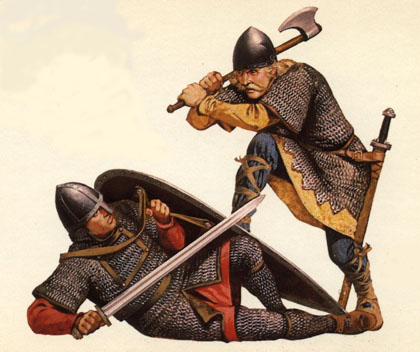
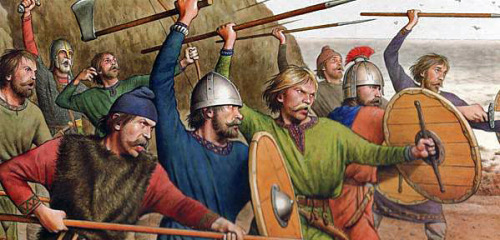


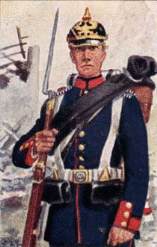





.jpg)

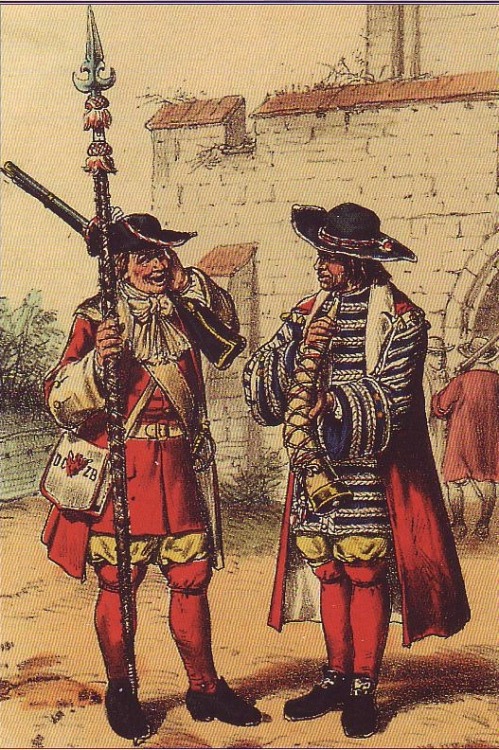
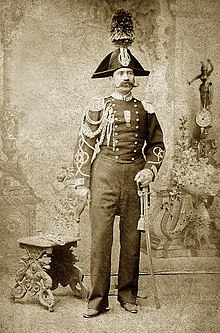
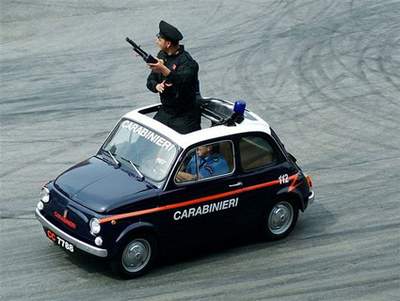



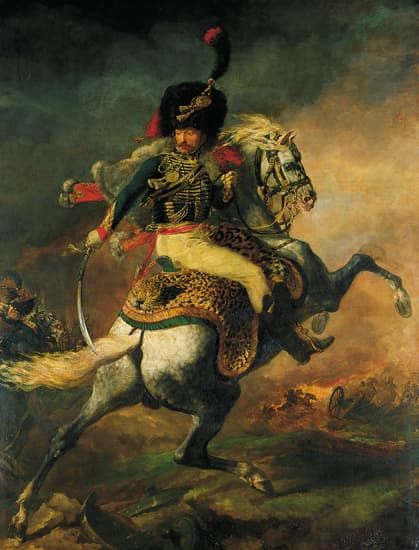







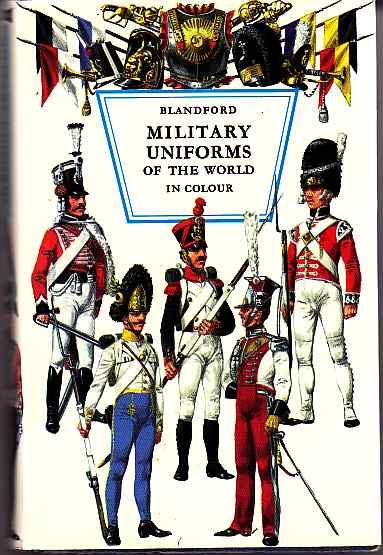

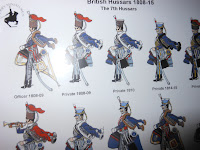



.png)


